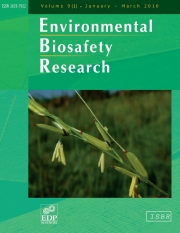Article contents
Assessing some of the regulatory approaches to transgenic plants: What can we learn from the regulation of other technologies?
Published online by Cambridge University Press: 15 March 2004
Abstract
Transgenic plants result from the isolation and insertion of genes into plants by means other than conventional breeding techniques, making it possible to isolate a gene that controls a valuable trait without also inserting thousands of other genes, as can occur with other methods. Transgenic plants potentially can provide substantial benefits to humans, but they can also pose risks to ecosystems, nontarget species and even to humans. I utilize the U.S. regulatory experience with chemical substances to provide some background for locating the strengths and weaknesses of different legal structures as well as providing an opportunity to learn from them. Learning from that case study and different legal structures utilized therein, as well as from the state of the world in which transgenic plants will be introduced and the state of the relevant sciences combined with a National Research Council Report on transgenic plants, this essay assesses the regulatory procedures that the U.S. Department of Agriculture uses to evaluate the risks from transgenic plants. These legal structures, although well suited for identifying risks before there is extensive exposure, have a number of shortcomings for reviewing the products of a new and not well-understood technology. The U.S. could take some steps toward improving its reasonable, tiered, pre-market approach for reviewing the risks from transgenic plants by following the NRC recommendations and learning from shortcomings of the regulation of chemical risks. Whether it will be or not remains to be seen.
- Type
- Research Article
- Information
- Copyright
- © ISBR, EDP Sciences, 2004
References
- 1
- Cited by


